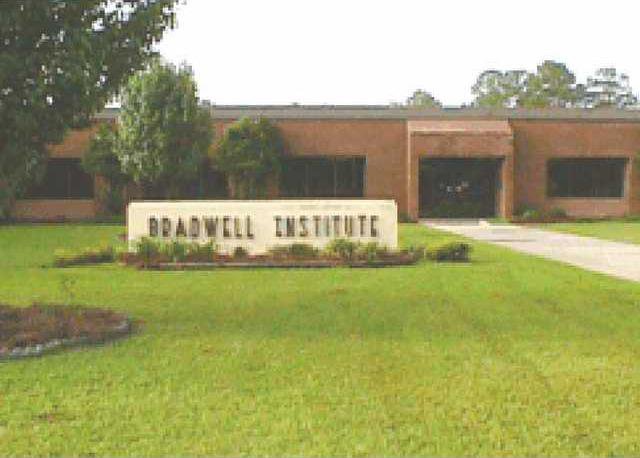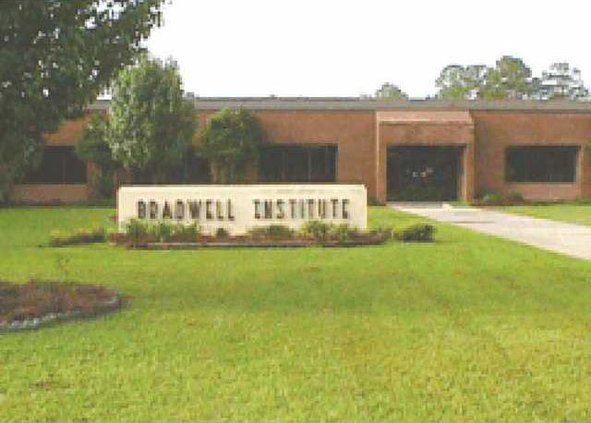First of all I would like to thank Ms. Richey, from Bradwell Institute’s front office, Pat Watkins of the Coastal Courier and the Liberty County Library for their assistance in finding information about the history of the school.
Bradwell Institute was founded in 1871 by Capt. Samuel Dowse Bradwell and incorporated in 1872. The school had closed during the American Civil War while the men went off to fight in the war. It was named in honor of Col. James Sharpe Bradwell, father of Capt. Samuel Bradwell.
Bradwell Institute was a private institution where students paid tuition and were boarded in reserved homes.
The terms of tuition were as follows:
1. Primary classes were $2.50 per month
2. Junior classes were $ 3.25 per month, and
3. Senior students had to pay a fee of $4 per month.
Boarding of the students ranged from $10-$11 per month, and all tuition and boarding fees had to be settled at the close of each term.
The scholastic year consisted of 10 months and was divided into spring and fall terms. The spring term commenced on the second Monday in January and continued for 24 weeks. The fall semester began on the first Monday in September and continued for 16 weeks. The tuition was due even if a student entered classes later and no deductions were made for temporary absences.
The curriculum was full and complete. In addition to the common English, algebra, geometry, surveying, navigation, natural philosophy, mental philosophy, botany, astronomy and philology.
Students were also obligated to take physiology, geology, chemistry, Greek, Latin, typography, mythology, and zoology.
The course of instruction was thorough and practical with the prominent idea of preparing the students here at home for the active duties of life. The objective was to assist every student at Bradwell to meet a point of health and morality that would have them compare favorably with any community in the state of Georgia. Those who wished to fit themselves for teaching were met with much assistance and given more opportunity to advance in a teaching career. The regular course graduates were awarded diplomas, but if a student participated in just one particular course, he or she would be granted a certificate of completion.
The community was encouraged to rent, lease and/or purchase lots and homes convenient to the campus so students who were boarding could be accommodated. In 1876, the building was renovated and repaired as well as some valuable additions made to establish areas for the collection and storage of instruments and apparati. The authority to do these repairs and additions were presented by and sanctioned upon the grant of the principal.
Principal S.D. Bradwell lived by a code that he instilled in the students as well as the community. The object of his code was as follows:
(1) “The Bradwell Institute is a home institution and its object is to be the Central High School for this section of the State, where free from the excitements and dysfunctions of larger towns, our boys and girls may receive a good substantial EDUCATION.”
In any of his memos or handouts, S.D Bradwell would always end them with:
(2) “For further particulars, address the principal, S.D. Bradwell Hinesville, Georgia.”
Today, Bradwell Institute is a public all-inclusive high school. The school is run by Dr. Vicki Albritton, and a staff who have in many ways followed in the footsteps of S.D Bradwell as far as the concern for the learning and well-being of all students who attend the school. I say this because as I read the schools statement of beliefs, the Bradwell Institute has three things in mind - education, safety and success.
*1-2 The Hinesville Gazette, March 24, 1879.
Bradwell Institute was founded in 1871 by Capt. Samuel Dowse Bradwell and incorporated in 1872. The school had closed during the American Civil War while the men went off to fight in the war. It was named in honor of Col. James Sharpe Bradwell, father of Capt. Samuel Bradwell.
Bradwell Institute was a private institution where students paid tuition and were boarded in reserved homes.
The terms of tuition were as follows:
1. Primary classes were $2.50 per month
2. Junior classes were $ 3.25 per month, and
3. Senior students had to pay a fee of $4 per month.
Boarding of the students ranged from $10-$11 per month, and all tuition and boarding fees had to be settled at the close of each term.
The scholastic year consisted of 10 months and was divided into spring and fall terms. The spring term commenced on the second Monday in January and continued for 24 weeks. The fall semester began on the first Monday in September and continued for 16 weeks. The tuition was due even if a student entered classes later and no deductions were made for temporary absences.
The curriculum was full and complete. In addition to the common English, algebra, geometry, surveying, navigation, natural philosophy, mental philosophy, botany, astronomy and philology.
Students were also obligated to take physiology, geology, chemistry, Greek, Latin, typography, mythology, and zoology.
The course of instruction was thorough and practical with the prominent idea of preparing the students here at home for the active duties of life. The objective was to assist every student at Bradwell to meet a point of health and morality that would have them compare favorably with any community in the state of Georgia. Those who wished to fit themselves for teaching were met with much assistance and given more opportunity to advance in a teaching career. The regular course graduates were awarded diplomas, but if a student participated in just one particular course, he or she would be granted a certificate of completion.
The community was encouraged to rent, lease and/or purchase lots and homes convenient to the campus so students who were boarding could be accommodated. In 1876, the building was renovated and repaired as well as some valuable additions made to establish areas for the collection and storage of instruments and apparati. The authority to do these repairs and additions were presented by and sanctioned upon the grant of the principal.
Principal S.D. Bradwell lived by a code that he instilled in the students as well as the community. The object of his code was as follows:
(1) “The Bradwell Institute is a home institution and its object is to be the Central High School for this section of the State, where free from the excitements and dysfunctions of larger towns, our boys and girls may receive a good substantial EDUCATION.”
In any of his memos or handouts, S.D Bradwell would always end them with:
(2) “For further particulars, address the principal, S.D. Bradwell Hinesville, Georgia.”
Today, Bradwell Institute is a public all-inclusive high school. The school is run by Dr. Vicki Albritton, and a staff who have in many ways followed in the footsteps of S.D Bradwell as far as the concern for the learning and well-being of all students who attend the school. I say this because as I read the schools statement of beliefs, the Bradwell Institute has three things in mind - education, safety and success.
*1-2 The Hinesville Gazette, March 24, 1879.

